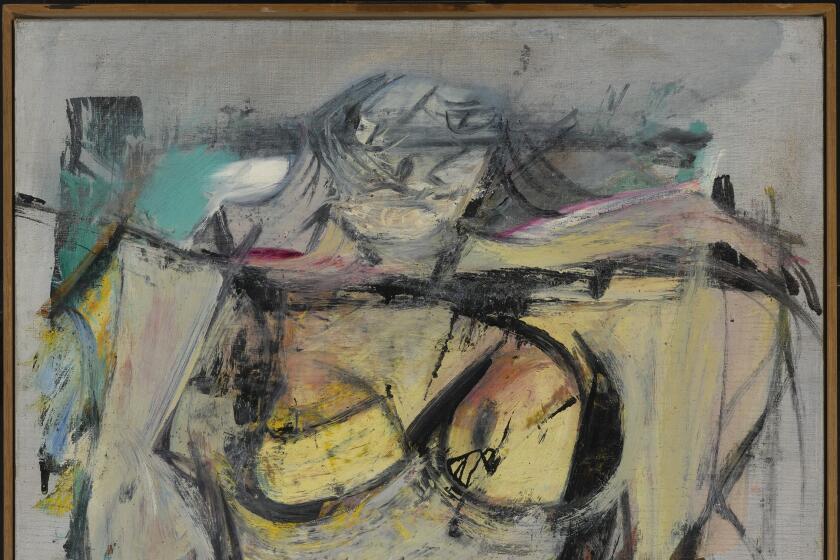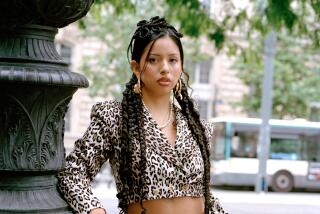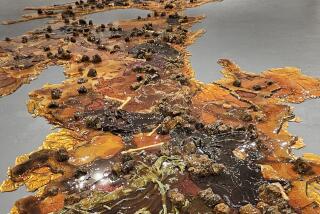Review: An engaging LACMA show delves into how Indigenous Colombian cultures think about gold
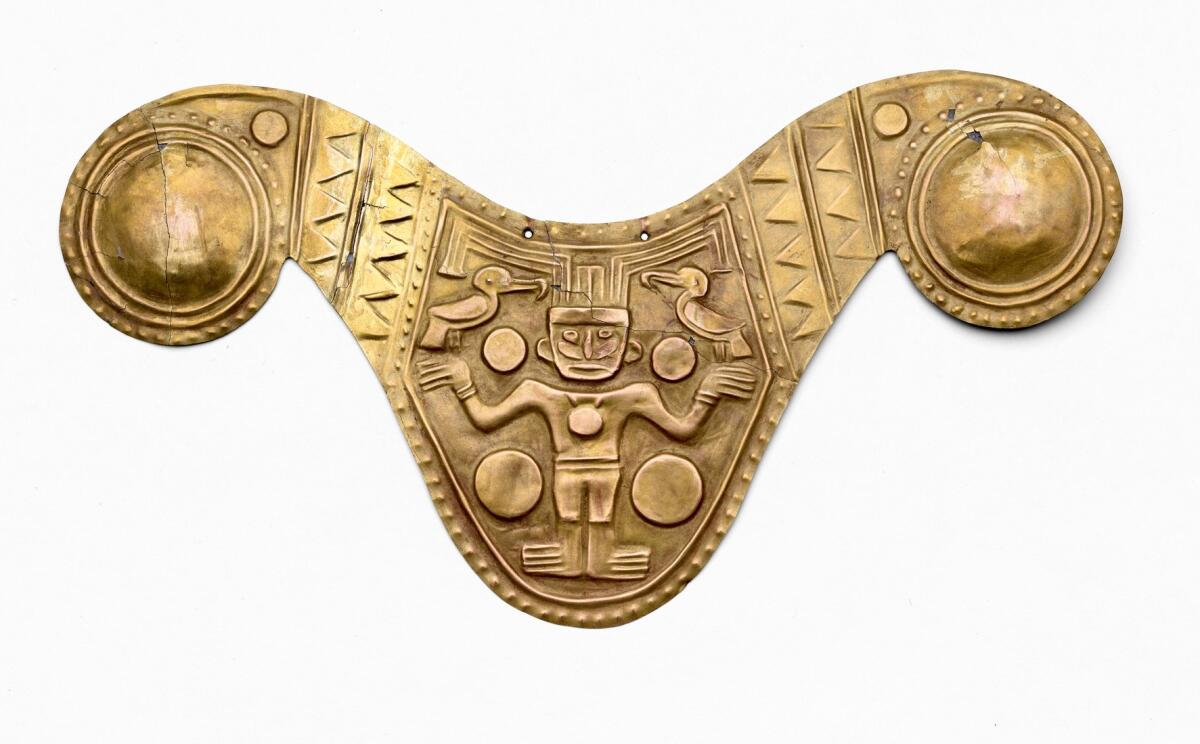
Gold!
That’s a likely draw for “The Portable Universe: Thought and Splendor of Indigenous Colombia,” a deeply engaging new exhibition at the Los Angeles County Museum of Art. When the word “splendor” turns up in an art museum title, the precious gilded metal is usually somewhere in the vicinity.
And that’s the case here — albeit with a twist. The scores of metal objects in the show are fabricated from tumbaga, an alloy of gold and copper (and sometimes other metals, including silver) that was in widespread use in Central and South America before the Spanish conquest. Tumbaga is both malleable and hard, ideal for intricate metalwork, while a mild acid wash removes copper from a top layer and allows the gold to shine like the sun.
“The Portable Universe” features an abundance of exquisitely crafted tumbaga pendants of magnificent birds; elaborate breastplates and pectoral adornments that fuse bilateral geometry with organic animal and other motifs; small but refined votive offerings; and astounding nose ornaments that clip between the nostrils, hang over the mouth and are sometimes almost as wide as a face. (My favorite features an upright hand at each end, as if the wearer were using a glittery golden charm to permanently exclaim, “Oh, my!”) There’s even a generous set of golden ornaments arrayed over a contour wall drawing of a human body, which shows an Indigenous burial tradition.
The deceased’s head is capped with a flattened crown topped by a probing pair of fat, insect-like antennae. Below it comes one of the show’s most dazzling nose-ornaments — a curved disk-segment studded with protruding buttons and dangling a hefty fringe of gold cylinders. It’s flanked by a matching pair of huge, dish-shaped ear ornaments. In the center of the chest is a heart-shaped breastplate trimmed in geometric shapes, in the middle of which is a chunky mask sporting its own extravagant nose and ear ornaments. Finally, simple gold cuffs wrap the wrists and ankles, while a ring encircles a finger.
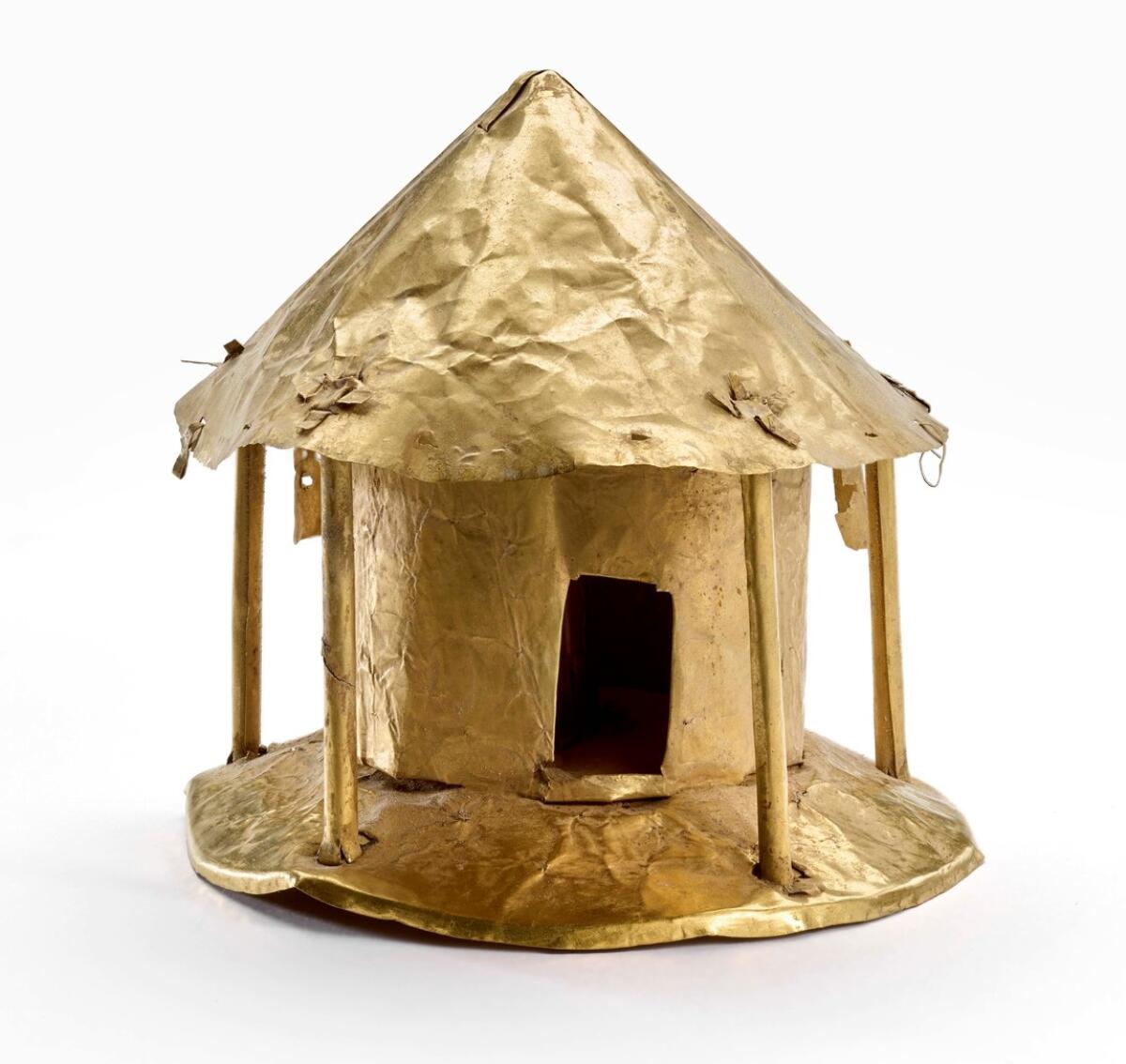
Unsurprisingly, the famous Museum of Gold at the Bank of the Republic in Bogotá is a lender and co-organizer of the show, together with the Museum of Fine Arts, Houston, where it travels in the fall, and LACMA. (Principal curators are LACMA’s Diana Magaloni and Julia Burtenshaw.) Delayed from last fall by the COVID-19 pandemic, it remains essentially intact.
What’s interesting about these gilded wonders, however, is the way the Indigenous cultures that made them think about gold. It’s not the way the European colonizers did. And it’s not the way American museumgoers generally do either.
Tumbaga’s value to Colombia’s Indigenous people does not reside within any economic system or method of monetary exchange. Instead, its utility in fabricating durable objects with eye-grabbing visual appeal is what counts. The use and usefulness of those objects, often but not exclusively within a ritual context, represents the acquisition of experiential knowledge. A wall text quoting Gold Museum curator Héctor García Botero is succinct: “In idolizing gold, Europeans could not understand — and thus could never fully eradicate — the Indigenous worldview.”
There are more than 90 different Indigenous societies in Colombia today, many said to descend from the Tairona people (active AD 900-1600 ). The curators worked with one — the Arhuaco, a group of about 27,000 people living in the Sierra Nevada de Santa Marta Mountains and represented by community elders Mamo Camilo Izquierdo and Jaison Pérez Villafaña. Given that the European colonizers are long gone, while Indigenous people are still around, take this as a strike in favor of the enduring power of comprehension over money.
In order to shift a museum visitor’s perspective, the show tries a few unusual things. Some work, others are iffier.
Scattered here and there, clusters of small, rough-hewn wooden stools — banquitos — in the shape of a wide, upside-down U stand 7 or 8 inches off the floor. Near the entry, ancient ceramic vessels show squatting figures seated on them, a configuration that turns up in other clay pieces in the show. In Arhuaco creation myths, the material world is formed and sustained through concentrated thought. (Think of creation as a giant Conceptual art project.) A banquito is where one sits, alone or in a group, to cogitate and reflect.
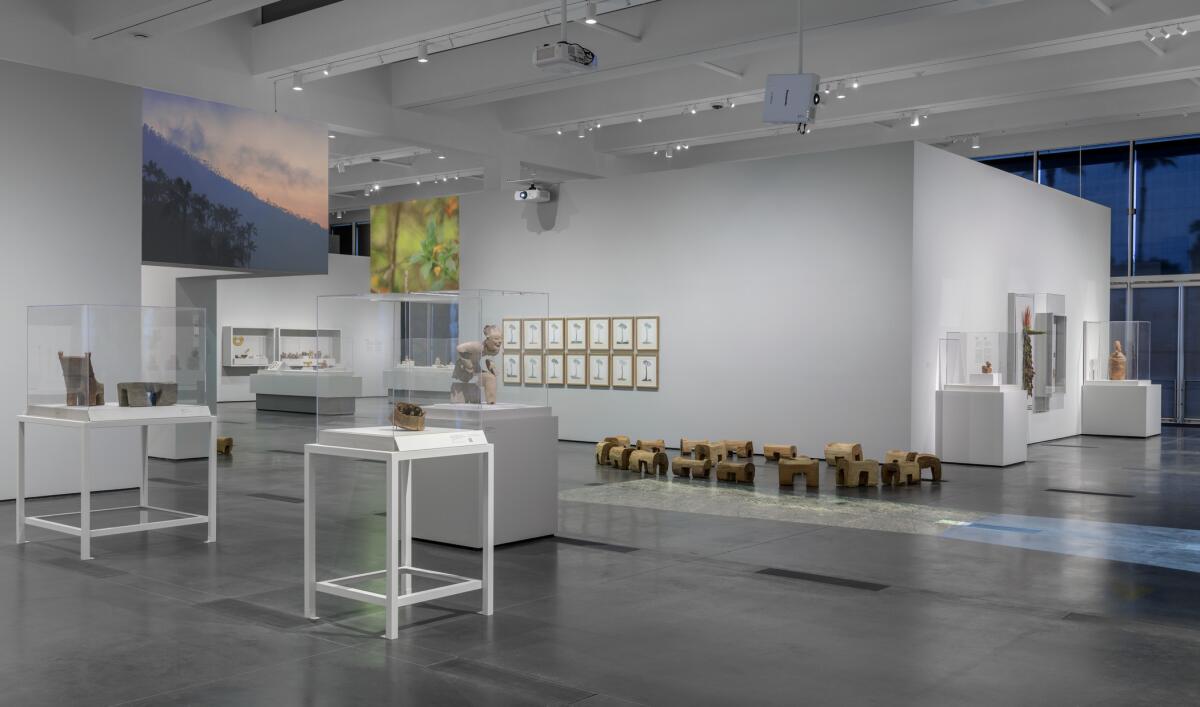
Museum visitors are invited to give it a try. I would have, but I would not have been able to get up without crawling on the floor — and few are likely to be dressed in the helpfully loose garments favored by the Arhuaco, at any rate. But the point is made.
A more controversial decision was to leave virtually all the 400 or so objects in the exhibition undated in their labelling. Linear history is not a Colombian Indigenous value, where meaning and significance arrive only in the interconnectedness of things in the here and now. (That’s what makes each object a “portable universe.”) Leaving the presumed fabrication date off the labels is a bit of a conceit, however, since any work of art in any art museum, whether a Chinese Qing Dynasty scroll painting or a German Baroque bronze, also lives two lives simultaneously — one in the historical nexus that produced it, the other in the current experience a viewer has of it.
Willem de Kooning’s ‘Woman-Ochre’ was stolen in 1985 and seriously damaged. The restored painting will be on view at the Getty starting next week.
An abrupt moment comes in an unidentified Spanish artist’s small, tattered painting of “Our Lady of Chiquinquirá,” Colombia’s patron saint, held together by embroidered embellishments. The picture is installed adjacent to a vitrine displaying seven European manuscripts that show colonial historicizing of Indigenous cultures — for example, engraved roundels featuring fabricated portraits of indigenous Muisca leaders done up like Habsburg royals. “Our Lady” sports the date 1786 painted on the frame, and the date is also reported on the wall label.
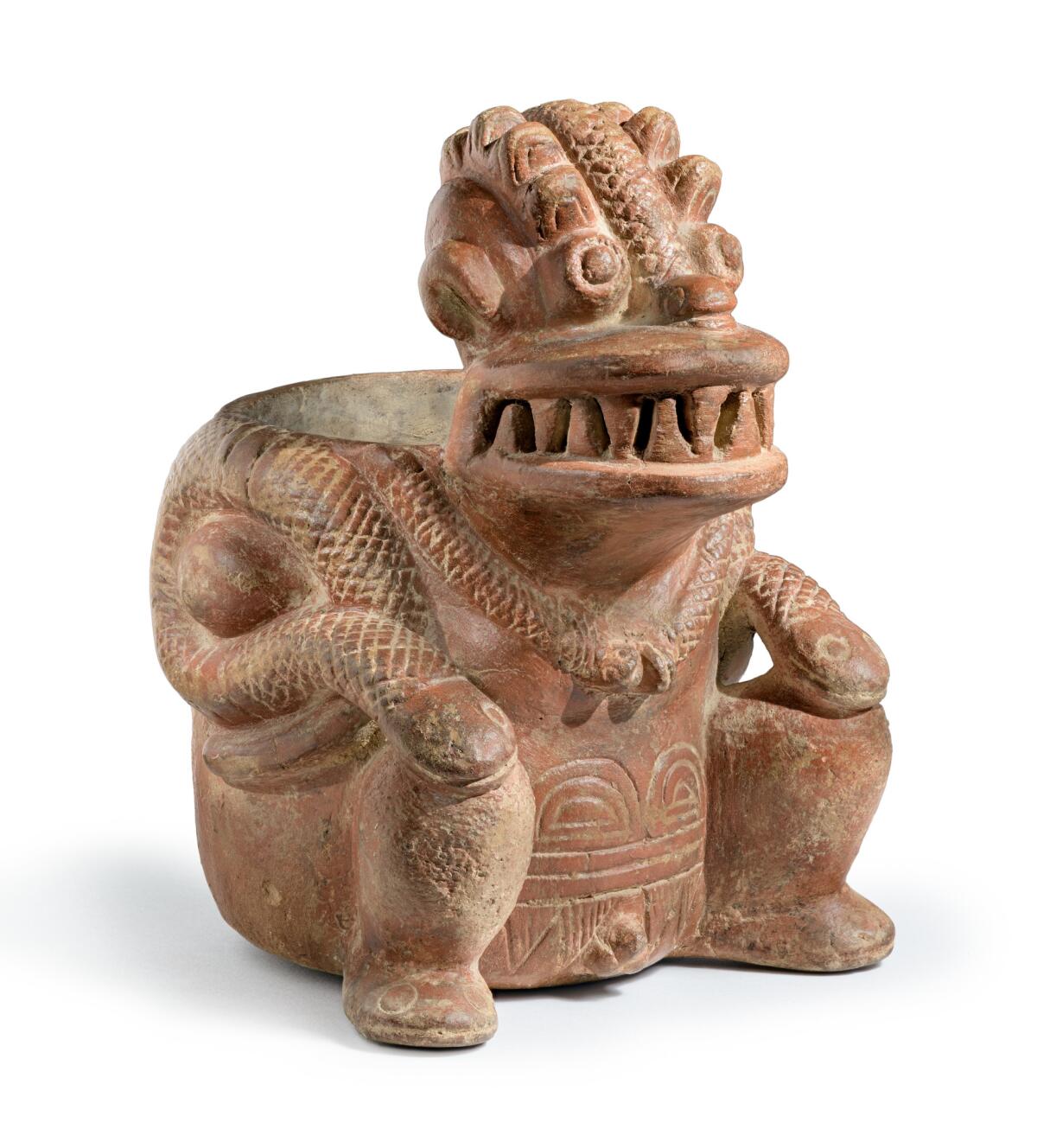
Elsewhere, a luxurious feathered headdress, several large paintings on bark and a few carved wooden “healer staffs” carry labels that say they are “modern,” apparently to distinguish them from the rest of the pre- and post-conquest objects in the show. The catalog also carries dates for just about everything. (The nose ornament with the hands, for example, was made between the 7th and 17th centuries.) Why such distinctions are being made is hard to say, but maybe I could have figured it out if I had pulled up a banquito.
At one point, “The Portable Universe” tips into advocacy for adopting an Indigenous worldview. A questionable wall text instructs: “The Western dichotomy between nature and culture, differentiating ourselves from everything else, denies our shared ancestry, shared space and shared needs.” No, it doesn’t, and a simplistic construction of a couple thousand years of Western thought is unhelpful.
The show’s often marvelous ceramics were the inspiration for the exhibition. LACMA acquired a 700-piece Colombian collection 14 years ago, about which not a great deal was known, and organizing a show helps underwrite research. One useful if unhappy discovery: Curators at Bogotá’s Gold Museum, which also houses a large ceramics collection, identified a number of fakes.
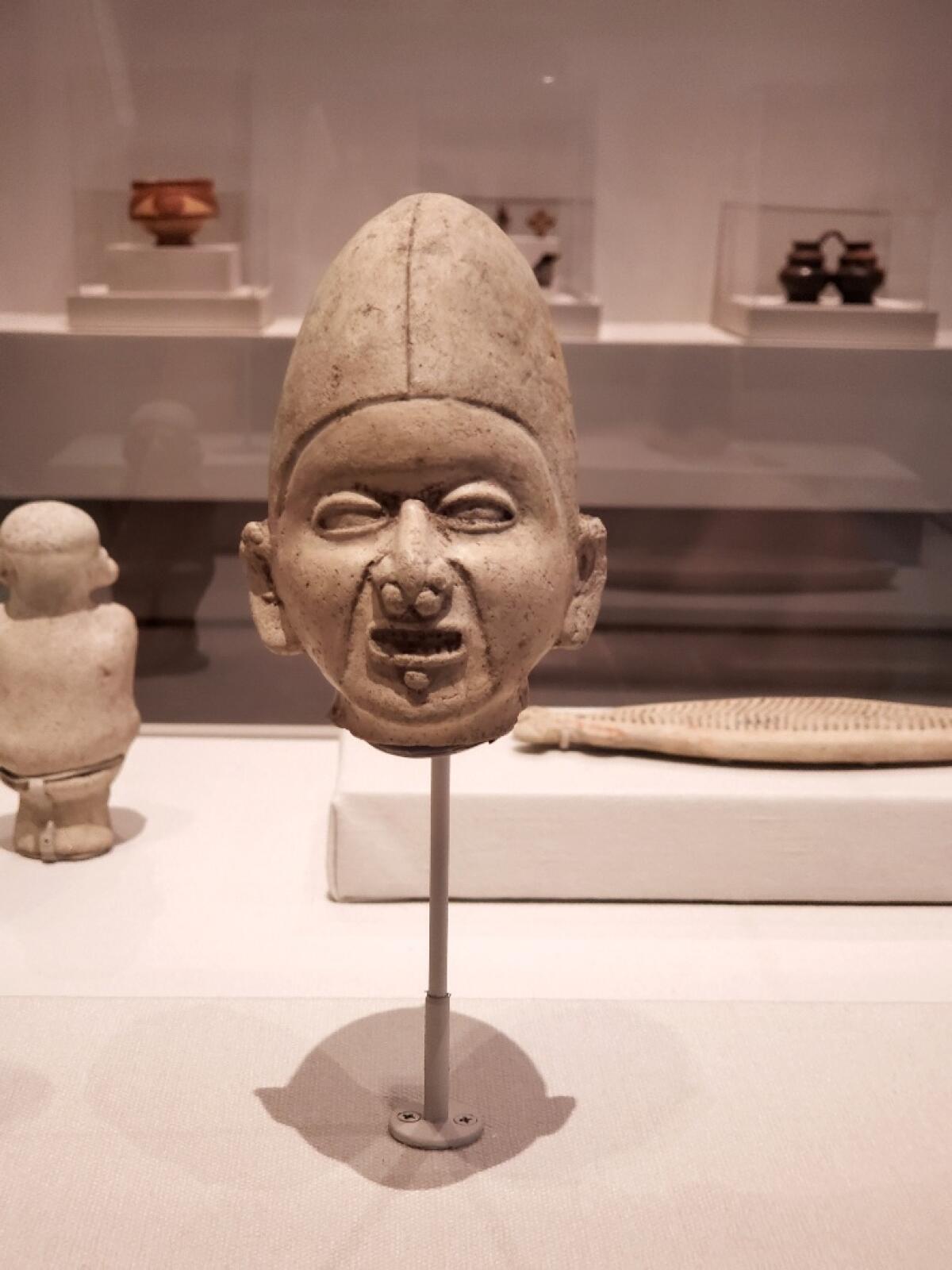
Those that aren’t include some of the exhibition’s most compelling objects, like a small, scowling fellow with a conical cranium cap that might remind you of Beldar Conehead. The purposes and functions can be obscure to an untrained observer. (Is the frequency of ceramic forms showing a figure carrying a basket on their back simply observational, one container acknowledging another from daily life; or does it represent something more?) But the inventiveness is often bracing.
Human and animal merge in a fanged basket-carrier encircled by a serpent, edging the representation of animal anatomy into something larger than itself. A clay shell painted in a woven textile pattern fuses a natural structure with a cultural one born of labor. Burial urns decorated with birds speak of spiritual flight.
The Arhuaco and other Indigenous Colombians believe that knowledge is a product of creative discovery. These endlessly inventive ceramics are completely convincing of that truth.
'The Portable Universe: Thought and Splendor of Indigenous Colombia'
Where: LACMA, 5905 Wilshire Blvd., Los Angeles
When: 11 a.m.-6 p.m. Thursdays-Tuesdays. Closed Wednesdays. Through Oct. 2.
Info: (323) 857-6000, lacma.org
More to Read
The biggest entertainment stories
Get our big stories about Hollywood, film, television, music, arts, culture and more right in your inbox as soon as they publish.
You may occasionally receive promotional content from the Los Angeles Times.
